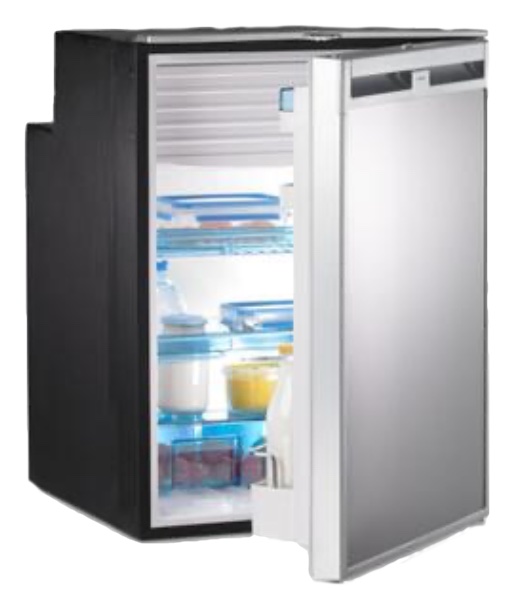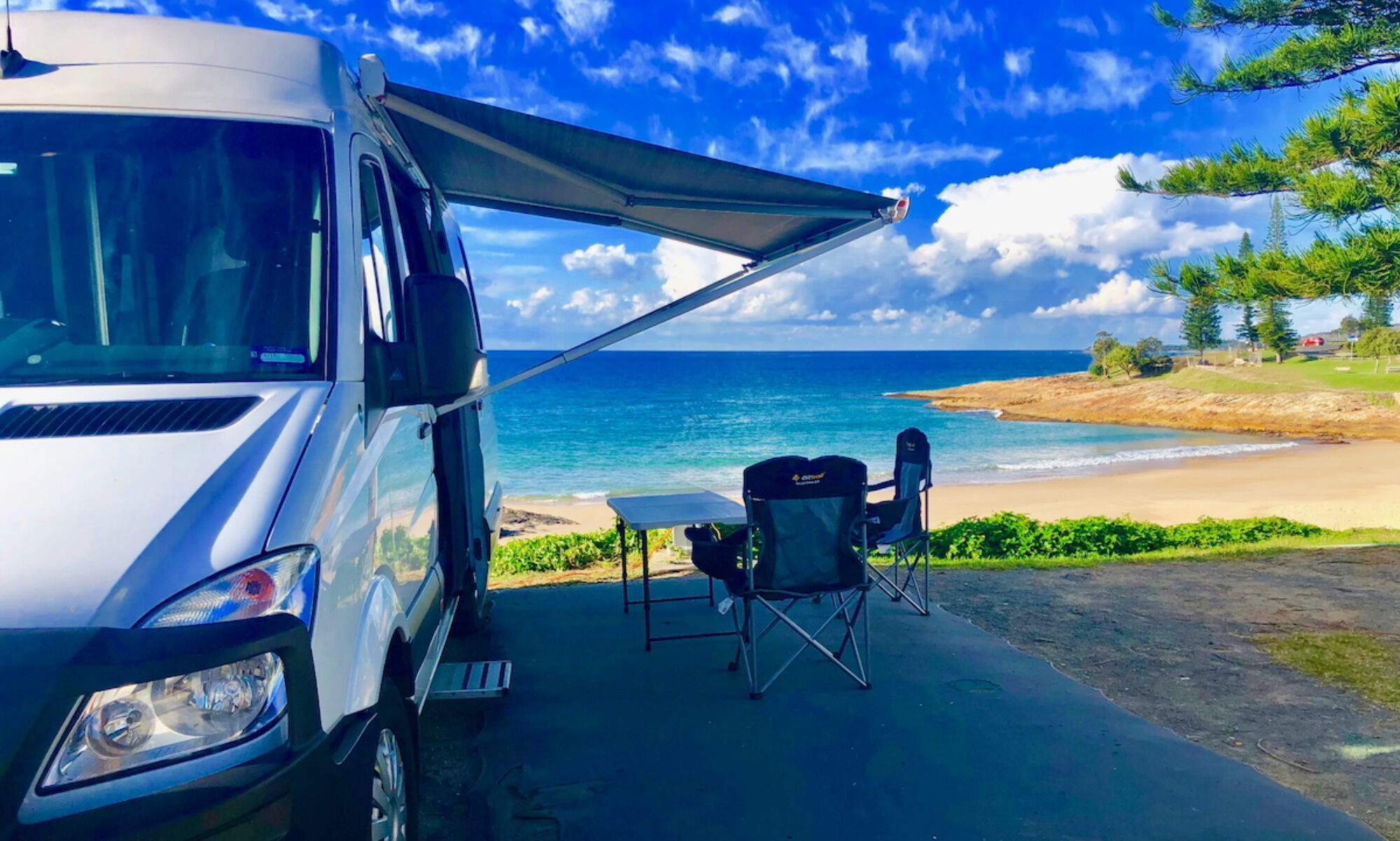Sustainability: Batteries & Solar | Water | Heating
DIY Mini Projects | Batteries and Solar | Campervan Appliances
-
- See also: 12V Basics
- Case Studies: 12V power cut-outs | Battery not charging
Background
 All your 12V appliances are connected to the battery with insulated copper cable.
All your 12V appliances are connected to the battery with insulated copper cable.
Although copper is a very good electrical conductor, copper cable still presents a resistance to the flow of 12V electrical current, which can cause a drop in current flowing from one end of the cable to the other.
Over short distances with low current this resistance isn’t of too much concern. However, when higher currents are involved, with longer cable runs, a cable that is too light (narrow) can seriously impact the performance of connected appliances, and could even result in a fire if the cable was to overheat in a confined space.
it is important that electrical cable is thick enough to carry the required levels of electrical current.
 Note: While not discussed here, it is also critical that cables are terminated correctly – joined firmly to connectors so there is no voltage loss within the join, and no opportunity for the cable to work loose over time. This requires a careful crimping procedure and/or a good soldered joint. Poor cable termination can lead to voltage loss, arcing and the possibility of a fire.
Note: While not discussed here, it is also critical that cables are terminated correctly – joined firmly to connectors so there is no voltage loss within the join, and no opportunity for the cable to work loose over time. This requires a careful crimping procedure and/or a good soldered joint. Poor cable termination can lead to voltage loss, arcing and the possibility of a fire.
Wire gauge standards
12V cable is measured using a standard ‘gauge’ system, based on the cross-sectional area of the copper wire in the cable (mm2).
The most common gauge standards (here in Australia) are AWG (American Wire Gauge) and B&S (Brown & Sharpe). These standards are both based in America, and use the same scale of numbers. There is also a wire gauge standard set by ISO – the International Organisation for Standardization.
 Unfortunately 12V cables sold as automotive cables in auto parts shops don’t always adhere to the above standards, and use their own measurement system, based on the diameter of the whole cable, including the plastic insulation. And since plastic insulation costs a lot less than good quality copper wire, the amount of copper in a cable of a given diameter may vary from one supplier to another.
Unfortunately 12V cables sold as automotive cables in auto parts shops don’t always adhere to the above standards, and use their own measurement system, based on the diameter of the whole cable, including the plastic insulation. And since plastic insulation costs a lot less than good quality copper wire, the amount of copper in a cable of a given diameter may vary from one supplier to another.
This can be very confusing and misleading.
For example, the Narva cable pictured on the right is labelled as 3mm, but the number in parenthesis indicates the actual copper wire size – 1.13mm2.
I would also question the ‘Amps’ rating provided on the labelling – is this a per metre figure, or a rating for using the entire length of cable on the roll in one path? And does this ‘Amps’ rating signify a safety figure (before the insulation melts), or a rating of unhindered and maximum current flow ?
If you do the calculations, and decide you need a copper wire with a cross sectional area of 4mm2, be careful not to buy an automotive cable labelled simply as “4mm”, or you could be getting a much thinner copper cable than you need….

Be sure to check that the cable you are using is heavy enough to carry the current required over the length of the cable – based on the cross-sectional size of the actual copper wire in the cable. The longer the cable run, the thicker it needs to be.
To the core
 Electrical cables are available with a single sold copper core, or a core composed of multi-strand copper wires.
Electrical cables are available with a single sold copper core, or a core composed of multi-strand copper wires.
Solid core cable is often found in residential electrical installations, where there are long runs, few turns, and not too much movement.
Flexible multi-strand cable is more suited to the Campervan and canopy/camping environment – lots of tight twists and turns, and plenty of ongoing flexing, movement and vibration.
But just to add some more confusion, there are good quality multi-strand cables, with heavier gauge strands, and light duty multi-strand cables with very thin strands – the sort of cable you might find in children’s toys.
If you aren’t sure which cable to use for a project, ask an expert. The best place to source cables for your camper is from an auto-electrical supplier, preferably one with experience in, and knowledge of, Campervan, Caravan, canopy camping and Motorhome requirements.
So – what size cable do you need?
 The very first thing you need to do before choosing a cable is determine how much electrical current will be running through the cable. Check the specs of the appliances / accessories that the cable will be connected to, then add 10% for safety.
The very first thing you need to do before choosing a cable is determine how much electrical current will be running through the cable. Check the specs of the appliances / accessories that the cable will be connected to, then add 10% for safety.
Once you know how much current will be carried by the cable, there is a formula to determine the gauge of the cable you should use – based on the amount of current the cable will carry, and the length of the ‘run’, or the ‘path’ of the cable. (Remember, the actual cable ‘run’ is twice the distance of the appliance from the battery – the electricity runs from the battery to the appliance and back again.)
There are plenty of online 12V DC wire gauge calculators to do all the maths for you – do a search, find a calculator, enter the current that the cable will be carrying, and the length of the cable. The calculator will display the suitable cross-sectional size of the cable required (mm2). (Otherwise drop by your local auto electrician and ask.)
You may then need to locate another site that lists the comparable AWG or B&S wire gauge for that particular sized cable.
Here is a quick summary chart – the lower the AWG / B&S number the heavier the gauge of the cable….

Ideally visit your local auto-electrician for some advice. They may also be able to make up the cables for you, with the appropriate spade connectors, eye terminators or Anderson plugs on each end. (And there is another whole story – connecting these fittings and plugs to the cables!)
Generally speaking, any appliance or device likely to be drawing heavy current (such as an inverter or battery charger) should be located as close as possible to the battery, to reduce the length of the connecting cables.
Appliance Amp ratings
Check the specs in your appliance manuals to ascertain how much current is used by an appliance, measured in Amps. When calculating cable requirements, keep in mind that multiple appliances may be using the one cable concurrently.
 Some appliances draw a higher current on startup than during normal operation – for example a fridge may draw 3 amps when the compressor is running, but could require over 6 amps at compressor startup. Make sure your cabling has the capacity to handle this startup current.
Some appliances draw a higher current on startup than during normal operation – for example a fridge may draw 3 amps when the compressor is running, but could require over 6 amps at compressor startup. Make sure your cabling has the capacity to handle this startup current.
Some examples….
-
- LED Lights: < 1 amp
- 110L Upright Fridge: 3 amps (running)
- 110L upright Fridge: 6-8 amps (on startup)
- Water pump: 6 amps
- Solar panel: 10-20 amps
- Battery charger: 10-50 amps, depending on the model
- DC-AC 2000W Power Inverter: At max power, 200 amps, but some connected appliances may draw 350 amps at startup. Because of this heavy current draw, inverters should be mounted as close as possible to the house battery/s – use the 600mm x 6B&S gauge cables supplied with the inverter (at least).
More reading
|
-
- See also: 12V Basics
- Case Studies: 12V power cut-outs | Battery not charging
See also: DIY Mini Projects | Batteries and Solar | Campervan Appliances
